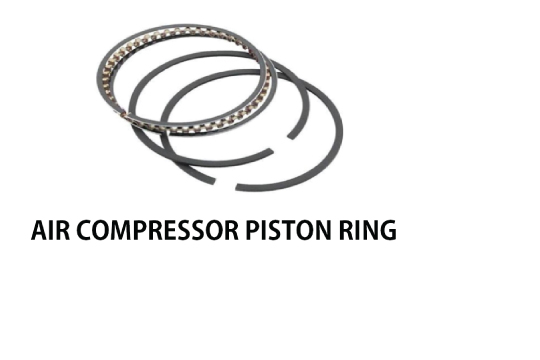-
Call
-
Whatsapp
9825014048
-
Location


Piston Compressor Ring
Piston Compressor Ring
Piston compressors, also known as reciprocating compressors, are workhorses in various industries requiring compressed air or gas. At the heart of these compressors is a crucial component: the piston ring. These small but robust rings ensure efficient and reliable compression, making them integral to piston compressor performance.
In this detailed guide, we will delve into the world of piston compressor piston rings. A piston compressor is a device that compresses air or gases in a cylinder using one or more reciprocating pistons. It is widely used in various industries for products ranging from air tools to cooling. The piston rings around the piston are essential components contributing to the compression by forming an airtight seal inside the cylinder.
Types of Piston Rings
There are different types of piston rings, each designed for specific applications and operating conditions. The most common types are:
Business Principle:
- Compression rings:Compression rings are the main piston rings that close the compression chamber. During compression, an airtight seal is formed, ensuring the air or gases are adequately contained.
- Oil control rings:Oil control rings are designed to control the delivery of lubricating oil to the cylinder wall. They prevent excess oil from entering the compression chamber, retain adequate lubricity, and reduce oil consumption.
- Wiper Rings:Wiper rings are often added to oil control rings to remove excess oil from the cylinder wall, further enhancing oil control.
Repair and Maintenance
Proper maintenance and upkeep of the piston ring is essential for appropriate and reliable compressor operation:
Working Principle:
- Regular Inspection: The piston ring should be inspected regularly for wear or corrosion. Damaged rings should be replaced immediately and fitted with airtight seals.
- Lubrication: Proper lubrication of the piston ring and associated components is essential to reduce friction and wear. Lubrication schedules should be diligently followed.
- Heat management: Proper temperature control is essential to prevent overheating. It also ensures that cooling systems such as fans or jackets are in good condition.
- Cleaning: Piston rings and cylinder walls should be cleaned to prevent accumulation of dirt, which can affect performance and efficiency.
Piston compressor piston rings may be small, but their importance in ensuring compression efficiency and reliability cannot be overstated. By providing an airtight seal, heat dissipation, vibration dampening, and assisting with oil management, these rings contribute to the overall performance of piston compressors in various industrial applications.


FAQ

Frequently Ask Questions
Piston compressor rings serve several functions, including sealing the combustion chamber to prevent leakage, regulating oil consumption, facilitating heat transfer from the piston to the cylinder wall, and assisting in maintaining compression pressure during the compression stroke.
Signs of worn or damaged piston compressor rings may include decreased compression efficiency, excessive oil consumption, blue smoke from the exhaust, reduced engine power, or abnormal engine noises such as knocking or rattling. A compression test or a visual inspection during maintenance can help determine if the rings require replacement.
Piston compressor rings are typically made from high-strength materials such as cast iron, steel, or various alloys. These materials offer durability, heat resistance, and proper sealing properties required for efficient operation under high temperatures and pressures. The choice of material may vary depending on the specific application and performance requirements.

